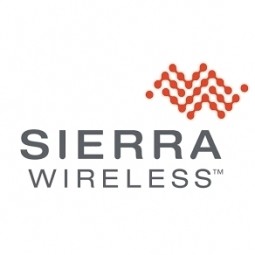
Technology Category
- Application Infrastructure & Middleware - Middleware, SDKs & Libraries
- Networks & Connectivity - Cellular
Applicable Industries
- Retail
- Telecommunications
Applicable Functions
- Maintenance
- Procurement
Use Cases
- Inventory Management
- Retail Store Automation
The Customer
Digitalli
About The Customer
Digitalli is an audiovisual communication company based in Paris. The company creates, produces, and installs video experiences for luxury retailers. Its clients include leading brands such as LVMH, L’Oréal, PUIG, and many more. Digitalli specializes in creating, designing, and producing point-of-sales films and adverts that can be used as part of in-store displays to promote products. The company handles the entire end-to-end process, from scripting the film to installing and managing the audiovisual and technology systems. It also offers a range of interactive solutions such as touchscreen technology, as well as tracking, presence, and motion sensors, so displays can adapt to the movement and position of customers.
The Challenge
Digitalli, a Paris-based audiovisual communication company, specializes in creating, designing, and producing point-of-sales films and adverts for luxury retailers. The company faced a significant challenge in monitoring its installed equipment to ensure its proper functioning. Any sudden malfunction could negatively impact the consumer experience, the visual aesthetic of a store, and ultimately, sales and brand image. Regular maintenance checks and fixing screens during unexpected outages proved to be expensive. Digitalli sought an IoT solution with an advanced management platform for remote monitoring of all network assets. However, deploying an IoT solution in a retail environment was not straightforward due to the need for multiple internal approvals and security clearances. Digitalli wanted to implement a cellular connectivity solution to connect its assets independently of its retail partners' systems. However, managing multiple SIM vendors and product inventories, tracking costs across different jurisdictions, and monitoring data consumption posed significant challenges.
The Solution
Digitalli opted for Sierra Wireless’ AirLink LX40, a compact, robust, and secure router that instantly connects to cellular networks. The LX40 supports IoT applications such as IP cameras, point-of-sale terminals, and indoor and outdoor video screens. It also supports low-power wide-area (LPWA) technologies, including LTE-M or NB-IoT, ensuring reliable coverage in indoor spaces, basements, and hard-to-connect places. This allowed Digitalli to set up its screens optimally without concerns about landline connection availability. Later, Digitalli chose Sierra’s Smart Connectivity for AirLink, using an embedded eSIM instead of a physical SIM. This simplified management as device SIMs could be activated over-the-air and did not require separate provisioning. The eSIMs were pre-integrated, providing instant global connectivity. Sierra’s Smart Connectivity for AirLink is designed to keep IoT devices connected anywhere in the world. It includes a global SIM that securely connects to cellular networks in 160+ countries. Digitalli can remotely activate the service, monitor its equipment globally, and troubleshoot any issues.
Operational Impact
Quantitative Benefit

Case Study missing?
Start adding your own!
Register with your work email and create a new case study profile for your business.
Related Case Studies.

Case Study
Improving Production Line Efficiency with Ethernet Micro RTU Controller
Moxa was asked to provide a connectivity solution for one of the world's leading cosmetics companies. This multinational corporation, with retail presence in 130 countries, 23 global braches, and over 66,000 employees, sought to improve the efficiency of their production process by migrating from manual monitoring to an automatic productivity monitoring system. The production line was being monitored by ABB Real-TPI, a factory information system that offers data collection and analysis to improve plant efficiency. Due to software limitations, the customer needed an OPC server and a corresponding I/O solution to collect data from additional sensor devices for the Real-TPI system. The goal is to enable the factory information system to more thoroughly collect data from every corner of the production line. This will improve its ability to measure Overall Equipment Effectiveness (OEE) and translate into increased production efficiencies. System Requirements • Instant status updates while still consuming minimal bandwidth to relieve strain on limited factory networks • Interoperable with ABB Real-TPI • Small form factor appropriate for deployment where space is scarce • Remote software management and configuration to simplify operations

Case Study
Digital Retail Security Solutions
Sennco wanted to help its retail customers increase sales and profits by developing an innovative alarm system as opposed to conventional connected alarms that are permanently tethered to display products. These traditional security systems were cumbersome and intrusive to the customer shopping experience. Additionally, they provided no useful data or analytics.

Case Study
How Sirqul’s IoT Platform is Crafting Carrefour’s New In-Store Experiences
Carrefour Taiwan’s goal is to be completely digital by end of 2018. Out-dated manual methods for analysis and assumptions limited Carrefour’s ability to change the customer experience and were void of real-time decision-making capabilities. Rather than relying solely on sales data, assumptions, and disparate systems, Carrefour Taiwan’s CEO led an initiative to find a connected IoT solution that could give the team the ability to make real-time changes and more informed decisions. Prior to implementing, Carrefour struggled to address their conversion rates and did not have the proper insights into the customer decision-making process nor how to make an immediate impact without losing customer confidence.

Case Study
Vodafone Hosted On AWS
Vodafone found that traffic for the applications peak during the four-month period when the international cricket season is at its height in Australia. During the 2011/2012 cricket season, 700,000 consumers downloaded the Cricket Live Australia application. Vodafone needed to be able to meet customer demand, but didn’t want to invest in additional resources that would be underutilized during cricket’s off-season.









